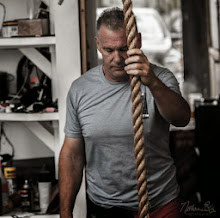It seems that one of the Hallmarks of a master of any discipline is the simplicity in how they perform their particular thing. It doesn't matter what the thing is; painting a house, gardening or writing software.
When I was an engineering manager at Hewlett Packard, we had a joke about making our designs more simple. "Take out parts one at a time until the design stops working and then put in the last part. That's the simplest it can be." Of course that's a joke!
Think about this joke in the context of your body therapy work. How many times have you tried and tried with no change occurring, and then when you were about to give up the a shift in the tissue happened? I don't know about you, but I usually explain this as the effort prior to the shift was the setup--I call this chopping vegetables, like when you're cooking--and providing the needed opening for the change, when in reality it may just have been wasted effort.
But I also spend time--as I'm sure you all do--in reflection about my work with my clients. Luckily, after 15 years, I've been able to make changes to my work to the point where it is fairly simple and efficient and is predicated on a philosophy of less is more. (The book "Outliers" by Malcolm Gladwell explores this in great detail.)
In my courses I try and force simplicity in the way the participants work, by informing them
about the need to work within the animal's "adaptive capacity". Most of the time I fear that this
is simply too complicated a theory for people beginning this work. However, during the advanced course I've been thrilled with the "aha's" that the participants get, and how their work becomes much more refined. (I also force this in this course by having the participants work on fewer horses, trading off with each other. I tried this in some beginning courses this year with less impressive results.)
The point of this post is that we can all learn to be more efficient in how we work. To do this we need to reflect on our work, the amount of time we spend touching the client, the amount of time we think about what/where we are going to touch and the making the ratio of thinking to touching closer to 1. Simplicity = thinking/touching. capice?
Saturday, August 8, 2009
Subscribe to:
Post Comments (Atom)




No comments:
Post a Comment